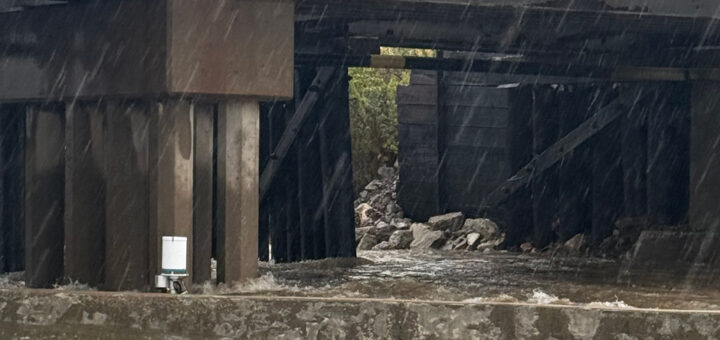Lake Erie Mudpuppies Never Grow Up
0One of Lake Erie’s mysteries, the mudpuppy salamander never reaches a state where it can live outside of water, according to the Port Clinton News-Herald. Instead, its adult form resembles a fish-frog combo, complete with tiny legs and gills around where its ears would be.
According to the Ohio Department of Natural Resources, the mudpuppy is permanently locked in metamorphosis, never undergoing a complete transition, and lives its whole life with gills. Some of its characteristics include a flat head, square nose, squinty eyes and red gills – these are typically short for mudpuppies living in clear, oxygenated water, and long for those living in muddy water.

Lake Erie Mudpuppy. (Credit: Flickr User Brian Gratwicke via Creative Commons 2.0)
“They look like they’ve got feather dusters on the side of their head,” said Greg Lipps, amphibian & reptile conservation coordinator at Ohio State University to the Port Clinton News-Herald. “I think it’s just a matter of the evolutionary pressure. If things are good in the water, there’s not a reason to leave.”
But even with their strange appearance, mudpuppies are one of the most misidentified species of Ohio salamander. This is possibly because they like to stay hidden beneath rocks and prefer cold waters. They join another, the hellbender, in that regard. Hellbenders are much rarer, endangered in fact, and breathe through their skin.

Eastern Hellbender. (Credit: Brian Gratwicke via Creative Commons 2.0)
Hellbenders, Lipps says, are more commonly found in the Ohio River Watershed. Mudpuppies can be found all over parts of the Midwest, but are highly common in the Lake Erie Watershed.
Interestingly, mudpuppies were the main food source for Lake Erie water snakes before invasive round gobies moved in. Now, instead of supporting the population of snakes, mudpuppies’ main ecological role is to prey on small crayfish, worms and snails. Their name comes from a squeaky noise they make that’s believed to sound like a dog’s bark.












